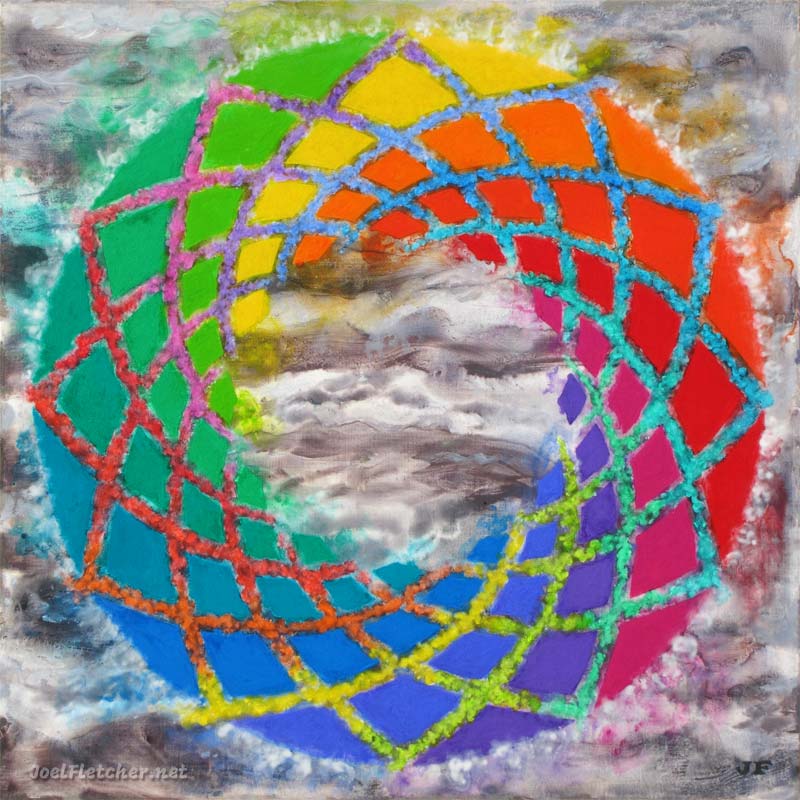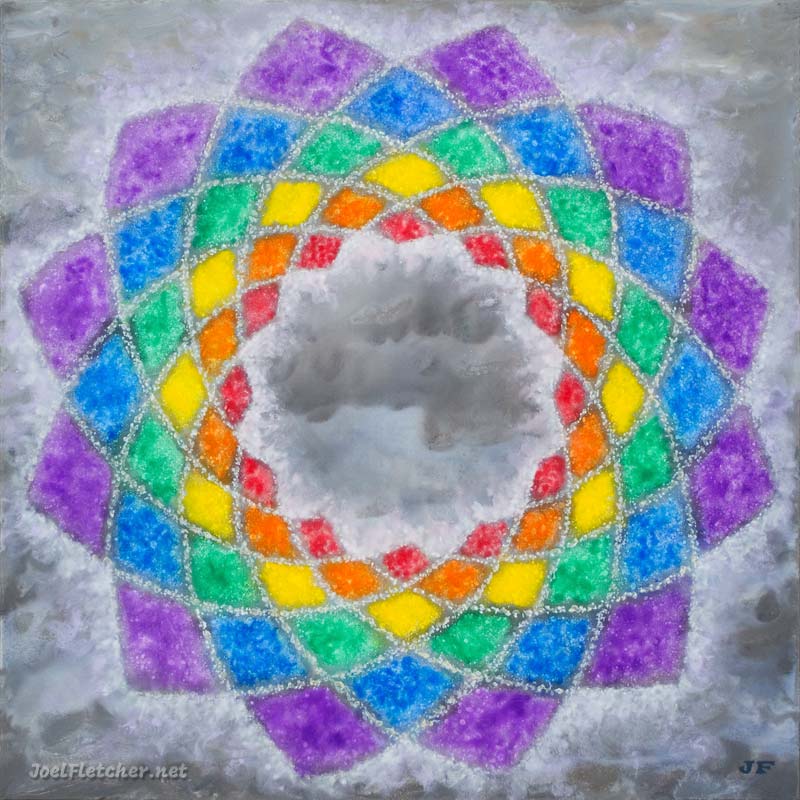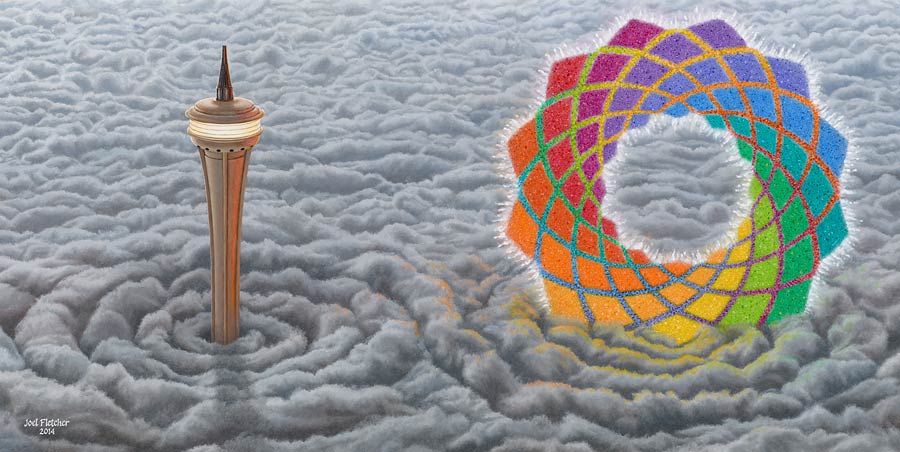Mysterium Mandala

The subject matter of my painting, Mysterium, was a major challenge to envision. Creating a portrait of the human psyche, I used symbolic imagery to depict the duality of the mind's conscious and unconscious aspects. Of particular concern was how to best portray the obscure nature of the unconscious. From the painting's first conception, I imagined a mandala, an image based on concentric rings and long associated with the subconscious mind. Ideally, my mandala should be a dazzling sight that would evoke ecstatic, transcendental, and numinous feelings. That goal, of course, would be nearly impossible to achieve. Normally, I do not create "study" paintings; however, to avoid such a task would be to risk ruining a major work. Creating several mandala studies was imperative in order to proceed with confidence in preparing the final painting.

My initial plan incorporated a logarithmic spiral, a pattern which often appears in nature. It was composed of geometric shapes (including an outer ring of 12 parts, each six deep, totaling 72) that seemed to have an intrinsic meaning. The center of the mandala was left open intentionally in order to indicate a lack of wholeness by omitting its complement (consciousness). I plotted out the design by hand, using both compass and straightedge, then commenced the preliminary study using a 12 x 12 inch panel painted with acrylics and utilizing wet-on-wet and conventional techniques. Intuitively, I decided that a full-spectrum color scheme would be the right choice, and it worked well with the number "12". Influenced by modern color theory, I added hues, magenta and cyan, which differ slightly from the traditional color wheel. Complementary colors filled the gaps between the shapes to add intensity and vibrancy. Pleased with the result but wanting to explore further possibilities, I made another study.

The design of the second piece changed slightly; the round outer edge was dropped for a more flower-like appearance. The classic three primary and three secondary colors were chosen, and they worked perfectly with the row of six. Besides the wet-on-wet procedure, I spattered paint to add a sparkly effect while still maintaining the integrity of the boundaries. I called the technique "controlled chaos". Additionally, sparkles were carefully dabbed in-between the shapes for added interest and definition. The result turned out nice, but it was not quite the look I wanted to achieve.

For the third study, I reversed the color order. The background was allowed to show through between the shapes. I also went for a softer look, allowing the edges of the forms to become less distinct. I liked the result, but this third attempt was not quite the charm. Yet another experiment would be required.

Overall I liked the color used in the first piece the best, but I wanted to modify the spectrum for a more even split between warm and cool colors. Finalizing the color choice was the main purpose of my fourth study. I lessened the concern about form boundaries and let loose with the "controlled chaos" method. I really liked the vitality and whirling sense of motion in this one, and by this point, I felt ready to go to the final.

I had no idea my objective would require four studies before I was ready to complete the final painting; however, the process of discovery in creating the finished product was worth the effort. The final mandala incorporated aspects from each of the prior studies. These experiments provided me with major insight into how one could render an imaginative subject with conviction.
© 2014 Joel Fletcher